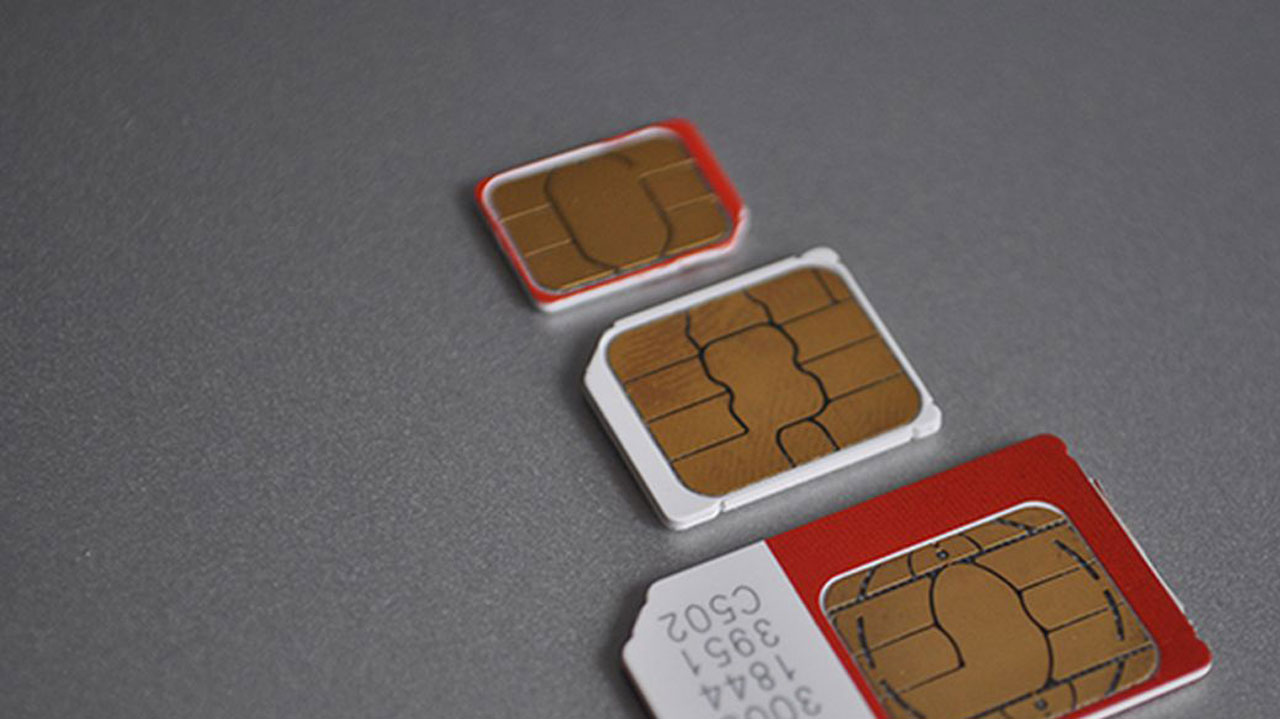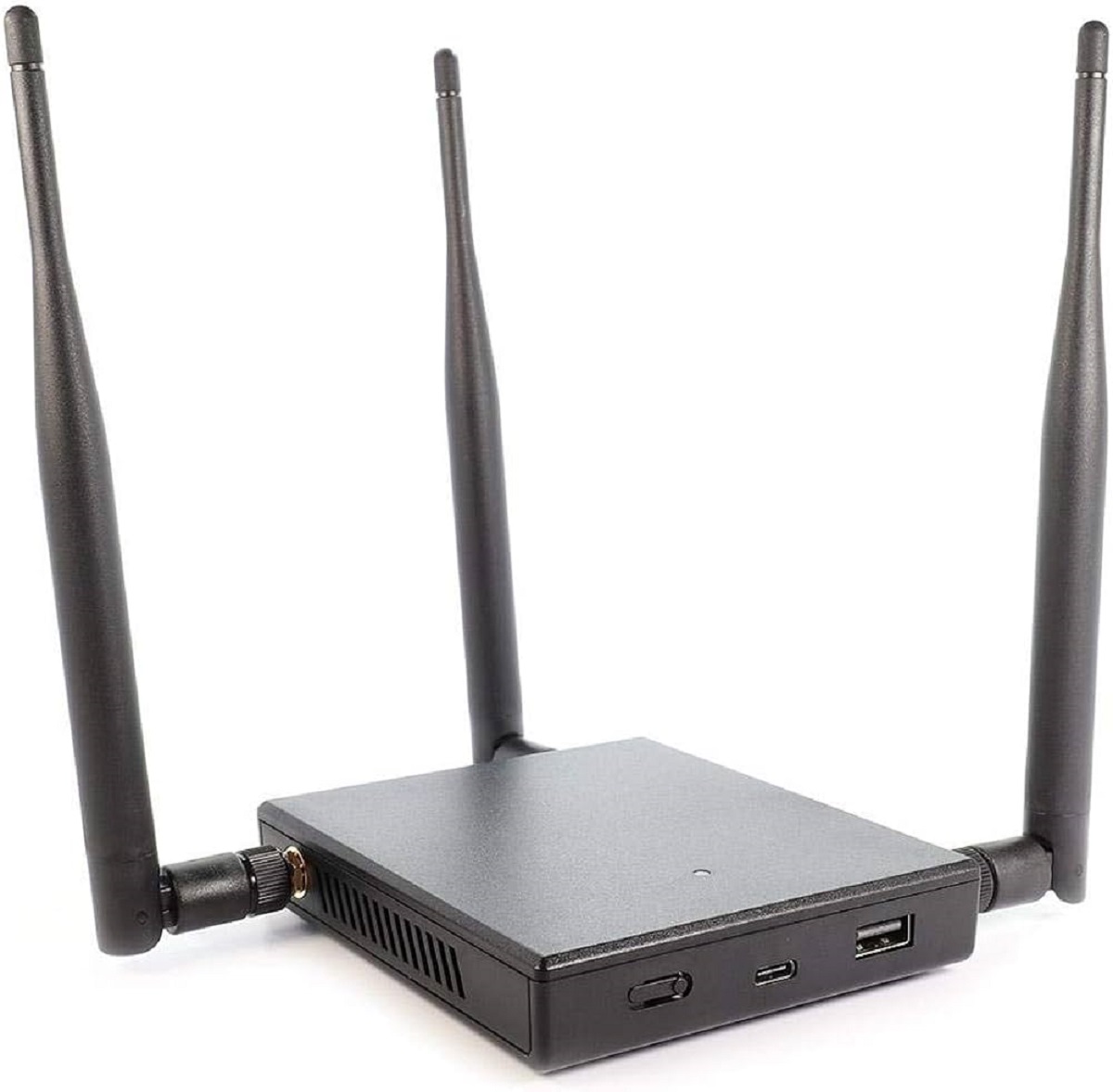Introduction
In today's digital age, the widespread use of mobile devices has revolutionized the way we communicate, work, and access information. From making calls and sending texts to accessing the internet and using various apps, mobile devices have become indispensable in our daily lives. However, with this increased reliance on mobile technology comes the potential for security threats, including the alarming risk of SIM card hacks.
SIM card hacks pose a significant threat to the security and privacy of mobile device users. Understanding the nature of these hacks and how to protect against them is crucial in safeguarding personal and sensitive information. This article aims to provide comprehensive insights into SIM card hacks, including their methods, risks, and signs, while also offering practical strategies for protecting against these malicious attacks.
As we delve into the intricate world of mobile device security, it's essential to recognize the evolving landscape of cyber threats and the importance of staying informed and proactive. By gaining a deeper understanding of SIM card hacks and their implications, individuals can take proactive measures to fortify their mobile device security and mitigate the potential risks associated with these sophisticated attacks. Let's embark on this journey to unravel the complexities of SIM card hacks and empower ourselves with the knowledge needed to safeguard our digital lives.
What is a SIM Card Hack?
A SIM card hack refers to the unauthorized access and manipulation of a mobile device's SIM card, which stores crucial information such as the user's phone number, contacts, and authentication data. This type of cyber attack is orchestrated by malicious individuals or groups with the intent of exploiting the vulnerabilities in a SIM card's security protocols to gain unauthorized access to the device and its associated services.
The SIM card, or Subscriber Identity Module, is a small, removable smart card that is essential for the functioning of mobile devices. It serves as the unique identifier for the user's mobile network subscription and facilitates communication with the cellular network. SIM cards also store authentication information, including cryptographic keys, which are used to establish secure communication between the device and the network.
A SIM card hack can take various forms, ranging from intercepting and manipulating communication between the device and the cellular network to remotely taking control of the SIM card to impersonate the legitimate user. These attacks can compromise the confidentiality and integrity of the user's communications, expose sensitive personal information, and even lead to unauthorized financial transactions if the device is linked to mobile payment services.
It's important to note that SIM card hacks are not limited to a specific type of mobile device or operating system. Regardless of the device's make or model, any mobile device that relies on a SIM card for network connectivity is susceptible to these types of attacks. As technology continues to advance, cybercriminals are constantly devising new and sophisticated methods to exploit vulnerabilities in SIM card security, making it crucial for users to stay vigilant and informed about potential threats to their mobile device security.
Understanding the mechanics and implications of SIM card hacks is the first step in fortifying one's mobile device security. By gaining insights into the intricacies of these attacks, users can take proactive measures to protect their devices and personal information from the pervasive threat of SIM card hacks.
How SIM Card Hacks are Performed
SIM card hacks are executed through various sophisticated methods that exploit vulnerabilities in the SIM card's security protocols and the communication channels between the mobile device and the cellular network. Understanding the intricate techniques used by cybercriminals to perpetrate these attacks is crucial in comprehending the potential risks and formulating effective protective measures.
One prevalent method used to perform a SIM card hack is known as SIM swapping, also referred to as SIM hijacking. This technique involves the unauthorized transfer of a victim's phone number from their legitimate SIM card to a SIM card controlled by the attacker. Cybercriminals typically initiate this process by gathering personal information about the victim through social engineering tactics or data breaches. Once armed with the necessary information, they contact the victim's mobile network provider, posing as the legitimate user, and request a SIM card replacement or transfer. Upon successful execution of the SIM swap, the attacker gains control of the victim's phone number and can intercept sensitive communications, bypass two-factor authentication measures, and even initiate unauthorized financial transactions.
Another method employed in SIM card hacks is the exploitation of vulnerabilities in the SIM card's security features. This can involve leveraging weaknesses in the authentication and encryption mechanisms used by the SIM card to communicate with the cellular network. Cybercriminals may deploy specialized hardware or software tools to intercept and manipulate communication between the mobile device and the network, allowing them to eavesdrop on conversations, intercept SMS messages, and gain unauthorized access to sensitive information stored on the SIM card.
Furthermore, remote over-the-air (OTA) attacks targeting the SIM card's firmware and software can also be utilized to compromise its security. By exploiting vulnerabilities in the OTA update process, attackers can inject malicious code into the SIM card, enabling them to remotely manipulate its functionality, extract sensitive data, and even take control of the device without the user's knowledge.
Additionally, the exploitation of weaknesses in mobile network protocols, such as signaling system 7 (SS7), presents another avenue for SIM card hacks. SS7 vulnerabilities can be exploited to intercept and reroute communications, track the location of mobile devices, and facilitate unauthorized access to the SIM card's authentication data.
As cybercriminals continue to evolve their tactics and exploit emerging technologies, it is imperative for mobile device users to remain vigilant and adopt proactive security measures to mitigate the risks posed by SIM card hacks. By understanding the intricate methods employed by attackers, individuals can take informed steps to fortify their mobile device security and safeguard their personal information from these pervasive threats.
Risks of SIM Card Hacks
SIM card hacks pose significant risks to the security and privacy of mobile device users, encompassing a range of potential consequences that can have far-reaching implications. Understanding these risks is crucial in comprehending the severity of SIM card hacks and the necessity of implementing robust protective measures.
One of the foremost risks associated with SIM card hacks is the compromise of sensitive personal and financial information. By gaining unauthorized access to a victim's SIM card, attackers can intercept confidential communications, access contact lists, and potentially obtain access to sensitive financial data if the device is linked to mobile payment services. This breach of privacy can lead to identity theft, financial fraud, and unauthorized transactions, posing substantial financial and reputational risks to the victim.
Furthermore, SIM card hacks can undermine the security of two-factor authentication (2FA) mechanisms, which often rely on SMS-based verification codes sent to the user's mobile device. By intercepting these verification codes, attackers can bypass 2FA measures and gain unauthorized access to the victim's online accounts, including email, social media, and financial platforms. This can result in unauthorized account access, data breaches, and the compromise of sensitive personal and professional information.
Moreover, SIM card hacks can enable attackers to impersonate the legitimate user, utilizing the compromised phone number to deceive contacts, engage in fraudulent activities, or perpetrate social engineering attacks. This not only jeopardizes the victim's personal and professional relationships but also exposes them to potential legal and regulatory implications arising from unauthorized activities conducted using their compromised identity.
Additionally, the exploitation of SIM card vulnerabilities can facilitate the unauthorized tracking and monitoring of the victim's location and communications. Attackers can leverage compromised SIM cards to track the victim's movements, intercept their calls and messages, and potentially engage in stalking or surveillance activities, posing serious threats to personal safety and privacy.
Furthermore, the implications of SIM card hacks extend beyond individual users to encompass broader societal and economic risks. Large-scale SIM card hacks targeting organizations or public figures can disrupt critical communications, compromise sensitive corporate data, and undermine public trust in mobile technology, leading to financial losses and reputational damage on a significant scale.
By comprehensively understanding the diverse risks associated with SIM card hacks, individuals and organizations can recognize the urgency of implementing robust security measures to mitigate these threats. Proactive steps such as implementing strong authentication methods, regularly monitoring account activities, and staying informed about emerging security vulnerabilities are essential in safeguarding against the pervasive risks posed by SIM card hacks.
Signs of a SIM Card Hack
Detecting a SIM card hack can be challenging, as these attacks are designed to operate covertly without arousing suspicion. However, being vigilant for certain signs can help individuals identify potential compromises to their mobile device security. Here are some key indicators that may signal a SIM card hack:
-
Unexpected Disruption of Services: Sudden disruptions in cellular network connectivity, such as an inability to make or receive calls, send texts, or access mobile data, can indicate unauthorized tampering with the SIM card or its associated services. If such disruptions occur without any apparent technical issues or network outages, it could be a red flag for a potential SIM card hack.
-
Unexplained Account Changes: Individuals should closely monitor their mobile network account for any unexplained changes, such as unauthorized SIM card replacements or transfers. Notifications regarding SIM card activations or changes in device settings that have not been initiated by the user may indicate illicit activities aimed at compromising the SIM card's security.
-
Unexpected Text Messages or Calls: The receipt of unusual text messages, particularly those related to account verification or authentication codes, can be indicative of attempts to intercept two-factor authentication (2FA) messages. Similarly, unexpected calls from service providers claiming unusual account activities should raise suspicion, as they could be part of social engineering attempts linked to a SIM card hack.
-
Unexplained Account Access: Individuals should be wary of any unauthorized access to their online accounts, especially those linked to their mobile device. Instances of unauthorized logins, changes in account settings, or unexpected activities on online platforms associated with the compromised phone number may signal a SIM card hack.
-
Unusual Battery Drain or Overheating: Anomalies in the device's battery performance, such as rapid depletion or unexplained overheating, could be attributed to malicious activities running in the background, including those associated with SIM card hacks. Unexplained resource-intensive processes may be indicative of unauthorized access to the device's resources.
-
Increased Spam or Phishing Messages: A sudden surge in spam, phishing, or unsolicited messages received via SMS or other messaging apps may signal that the compromised phone number is being exploited for fraudulent activities. These messages could be attempts to gather sensitive information or initiate unauthorized transactions.
-
Unexpected Financial Transactions: Individuals should be vigilant for any unexplained financial transactions or charges associated with their mobile device, especially those linked to mobile payment services. Unauthorized transactions or changes in payment settings could be indicative of a SIM card hack aimed at financial exploitation.
By remaining attentive to these signs and promptly addressing any suspicions of a SIM card hack, individuals can take proactive steps to mitigate the potential impact of these security breaches and protect their personal information from unauthorized access and exploitation.
Protecting Against SIM Card Hacks
Protecting against SIM card hacks requires a proactive approach to fortify mobile device security and mitigate the risks posed by these sophisticated attacks. By implementing robust protective measures and staying informed about emerging security threats, individuals can significantly reduce the likelihood of falling victim to SIM card hacks.
One fundamental step in safeguarding against SIM card hacks is to establish strong authentication methods for accessing mobile accounts and services. This includes setting up complex and unique PIN codes or passwords for SIM card access and ensuring that default security codes provided by mobile network providers are promptly changed to personalized, secure alternatives. Additionally, enabling biometric authentication features, such as fingerprint or facial recognition, can add an extra layer of security to the device and mitigate the risk of unauthorized SIM card manipulation.
Regularly monitoring account activities and promptly addressing any suspicious or unauthorized changes is paramount in detecting and mitigating potential SIM card hacks. Individuals should regularly review their mobile network account statements, notifications, and settings for any unexplained changes, such as SIM card replacements, transfers, or unauthorized access attempts. Promptly reporting any irregularities to the mobile network provider can facilitate swift action to secure the account and prevent further unauthorized access.
Furthermore, staying informed about emerging security vulnerabilities and best practices for mobile device security is crucial in mitigating the risks posed by SIM card hacks. Individuals should remain vigilant for security advisories, updates, and recommendations from mobile network providers and security experts. Keeping the device's operating system, apps, and security software up to date with the latest patches and security enhancements can help mitigate the risk of exploitation of known vulnerabilities by malicious actors.
Implementing additional security measures, such as encrypting sensitive data stored on the device and utilizing secure messaging and communication apps, can further fortify mobile device security against potential SIM card hacks. Using reputable security software and firewalls to detect and prevent unauthorized access attempts can provide an added layer of defense against malicious activities targeting the SIM card and the device's communication channels.
Moreover, exercising caution when sharing personal information and verifying the legitimacy of requests for sensitive account or authentication details can help mitigate the risk of social engineering tactics used in SIM card hacks. Individuals should refrain from sharing personal information, such as account details, PIN codes, or verification codes, with unknown or unverified entities, and should remain vigilant for potential phishing attempts or fraudulent communications aimed at gathering sensitive information.
By adopting a proactive and informed approach to mobile device security, individuals can significantly mitigate the risks posed by SIM card hacks and safeguard their personal information from unauthorized access and exploitation. Staying vigilant, implementing robust security measures, and promptly addressing any suspicions of unauthorized access are essential steps in protecting against the pervasive threat of SIM card hacks.
Conclusion
In conclusion, the pervasive threat of SIM card hacks underscores the critical importance of fortifying mobile device security and staying vigilant against evolving cyber threats. As mobile devices continue to play an integral role in our daily lives, understanding the complexities of SIM card hacks and implementing proactive security measures is paramount in safeguarding personal and sensitive information.
The diverse methods employed by cybercriminals to perpetrate SIM card hacks, including SIM swapping, exploitation of security vulnerabilities, and remote OTA attacks, highlight the sophistication and persistence of these malicious activities. The risks posed by SIM card hacks, ranging from financial exploitation and unauthorized access to personal data to potential societal and economic repercussions, underscore the far-reaching implications of these security breaches.
Recognizing the signs of a potential SIM card hack, such as unexpected disruptions in services, unexplained account changes, and unusual battery performance, empowers individuals to promptly address suspicions and mitigate the potential impact of these security breaches. By remaining attentive to these indicators and promptly reporting any irregularities to mobile network providers, individuals can take proactive steps to protect their personal information from unauthorized access and exploitation.
Implementing robust protective measures, such as establishing strong authentication methods, regularly monitoring account activities, and staying informed about emerging security vulnerabilities, is essential in mitigating the risks posed by SIM card hacks. Additionally, encrypting sensitive data, utilizing secure communication apps, and exercising caution when sharing personal information can further fortify mobile device security against potential security breaches.
As technology continues to advance and cyber threats evolve, staying informed and proactive in safeguarding mobile device security is crucial. By adopting a proactive and informed approach to mobile device security, individuals can significantly reduce the likelihood of falling victim to SIM card hacks and mitigate the potential risks associated with these sophisticated attacks.
In this dynamic digital landscape, where the reliance on mobile devices continues to grow, the proactive protection of personal information and the security of mobile communications are paramount. By understanding the intricacies of SIM card hacks and taking proactive measures to fortify mobile device security, individuals can navigate the digital realm with confidence, knowing that they are equipped to safeguard their personal information from the pervasive threat of SIM card hacks.
























